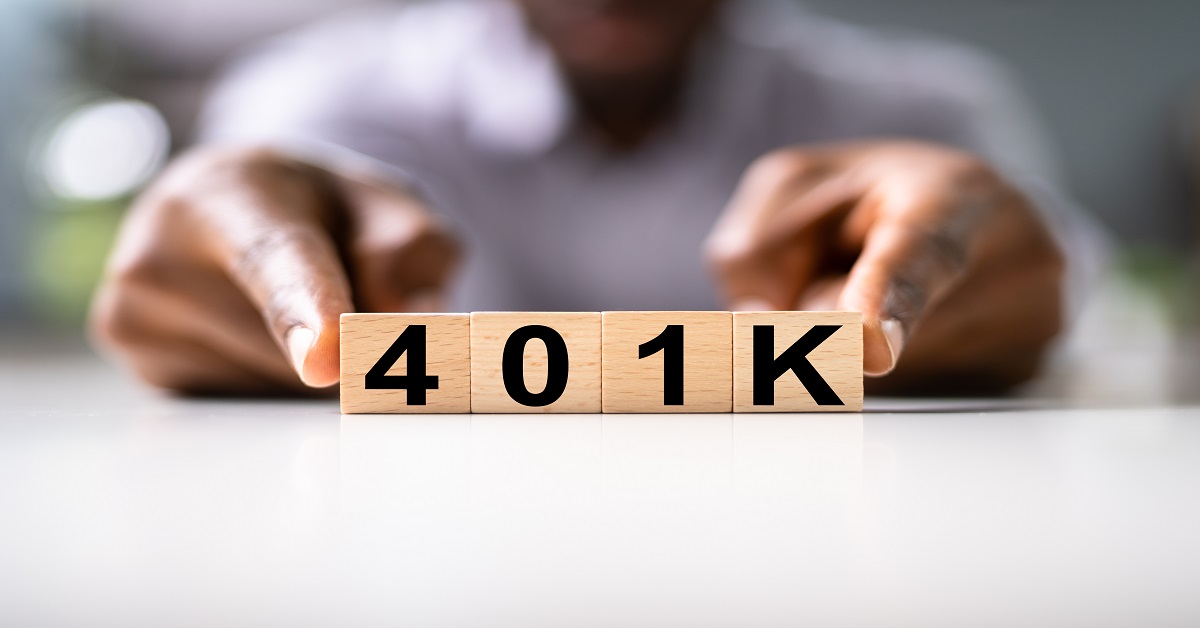
This blog is geared towards 401(k) plan sponsors, but is informational for everyone.
By now, you have likely heard of the SECURE Act 2.0—also known as “SECURE 2.0”—either in the news or through your plan’s record keeper. The goal of SECURE 2.0 is to encourage individuals to save more for retirement by giving plan sponsors opportunities to help their participants save. For plan sponsors that want to optimize their plan, these changes provide opportunities to better help participants.
In this article, we highlight several of the key changes brought about by SECURE 2.0, how participants benefit from these changes, and how plan sponsors can use these changes to enhance their retirement plan offerings.
Please note that the legislation includes many moving pieces. We invite you to connect with our team for a personalized review of how SECURE 2.0 impacts your company’s plan.
Roth Seems To Be Here To Stay With The “Rothification” Of Catch-Up Contributions
In prior budget discussions, Congress debated whether to close the opportunity that allowed retirement savers to make additional Roth contributions. With the enhancement of Roth options in SECURE 2.0, it appears that Roth will still be available.
Any retirement plan that allows catch-up contributions will need to treat those contributions as Roth contributions when made by “High-Paid Participants”—employees 50+ that want to contribute above the 401(k) limit[1], whose prior year’s wages exceeded $145,000. In addition, plan participants will be able to designate company matching, non-elective, and profit-sharing contributions as Roth contributions.
Required Minimum Distribution (RMD) Updates
The original SECURE Act of 2019 raised the minimum age required to begin taking RMDs, from 70 ½ to 72. Starting in 2023, the RMD age will increase again to 73, and will increase to 75 in 2033. For people already taking RMDs, nothing has changed.
SECURE 2.0 also introduces less punitive penalties relating to RMD failures. Previously, the penalty for failure to take an RMD was 50% of the RMD value; under SECURE 2.0, that penalty is halved to 25%. In addition, taxpayers can further reduce the penalty to 10% if they rectify that failure within two years. For plan sponsors, failing to make RMDs can potentially lead to the disqualification of the entire plan, so it’s important that any failures to make RMDs are swiftly corrected through the IRS’s Employee Plans Compliance Resolution System[2].
Expanded Plan Access For Long-Term, Part-Time Employees
The original SECURE Act of 2019 required employers to allow long-term employees working on a part-time basis to make elective deferrals in a 401(k) plan. Most plans include a 1,000-hour threshold of work in a 12-month period, and SECURE added 500 hours of work for three consecutive years; under SECURE 2.0, the three-year requirement has been lowered to two years.
Depending on how your plan is structured, you may not be required to provide matching contributions. However, if finding good employees is a challenge, the plan may be a great way to reward part-time or seasonal workers for their service and provide a valuable incentive for them to continue working for your organization.
Cash-Out Limit Increased For Small-Balance Accounts
Under current rules, retirement plans with a balance of $5,000 or less may be automatically cashed out by the plan and transferred to an IRA, unless the participant makes a direction. Under SECURE 2.0, the $5,000 threshold will increase to $7,000 after December 31, 2023.
By cashing out small-balance accounts, you can lower the administrative overhead and costs associated with your plan; however, it’s important to do it right and effectively communicate with account holders. If the account is rolled over to an IRA, the amount is effectively put into a money market account. If the account holder isn’t made aware of that, they might assume their investments have stayed the same and could wind up expecting returns that aren’t taking place in their account.
Plans with more than 120 participants are also required to be audited, which can cost between $8,000 and $12,000 per year in perpetuity. If you are near the 120-active and eligible participant threshold, cashing out small-balance accounts to stay under that threshold may save your company tens of thousands of dollars in audit fees.
Student Debt and Saving For Retirement
Many young savers don’t earn enough to pay their student loans and still make retirement plan contributions, which means these young investors aren’t taking full advantage of employer matching opportunities. SECURE 2.0 allows participants to count their student loan payments as an “elective deferral”: when the student pays towards their student loans, their employer can match (up to plan matching limits) in their retirement account. This provision is a great way to help participants who otherwise wouldn’t be able to enjoy compound growth in their retirement account until their student loans were paid off.
Expanded Emergency Savings
More than half of Americans don’t have enough money to cover a $1,000 unexpected expense without having to dip into credit[3]. SECURE 2.0 offers two different ways to help solve that problem.
The first is by allowing participants to take a $1,000 emergency withdrawal without being charged a penalty. This option still presents challenges as normal income tax rates still apply—if a participant needs $1,000, they would need to withdraw more than $1,000 to cover the tax and withholding.
The second is an “emergency sidecar” in the form of a Roth contribution. As long as the employee is not a Highly Compensated Employee (HCE), they are able to put up to $2,500 per year into a Roth account. Participants who have emergency expenses can take money from the Roth account without penalty and, since the account is funded with after-tax dollars, without the tax hit. Participants can take up to four withdrawals in a given year.
In both cases, employees are still saving for retirement, but they also have penalty-free access to their retirement savings to cover unexpected expenses if the need arises.
How We Can Help
When working with plan sponsors, our job at Strategic Wealth Partners is to manage complexity and deliver simplicity. If you would like to discuss how you can use the features of SECURE 2.0 to maximize the benefits of your retirement plan, we are here to help. We can sit down with you to discuss your goals for your plan and explore strategies you can use to improve your plan.
[1] Taxpayers should review the 401(k) and IRA limit increases for 2023 (Link)
[2] IRS, Correcting Required Minimum Distribution Failures. (Link)
[3] 56% of Americans can’t cover a $1,000 emergency expense with savings (Link)
Disclosure:
This article contains general information that is not suitable for everyone. The information contained herein should not be constructed as personalized investment advice. Reading or utilizing this information does not create an advisory relationship. An advisory relationship can be established only after the following two events have been completed (1) our thorough review with you of all the relevant facts pertaining to a potential engagement; and (2) the execution of a Client Advisory Agreement. There is no guarantee that the views and opinions expressed in this article will come to pass. Investing in the stock market involves gains and losses and may not be suitable for all investors. Information presented herein is subject to change without notice and should not be considered as a solicitation to buy or sell any security.
Strategic Wealth Partners (‘SWP’) is an SEC registered investment advisor with its principal place of business in the State of Illinois. The brochure is limited to the dissemination of general information pertaining to its investment advisory services, views on the market, and investment philosophy. Any subsequent, direct communication by SWP with a prospective client shall be conducted by a representative that is either registered or qualifies for an exemption or exclusion from registration in the state where the prospective client resides. For information pertaining to the registration status of SWP, please contact SWP or refer to the Investment Advisor Public Disclosure website (http://www.adviserinfo.sec.gov).
For additional information about SWP, including fees and services, send for our disclosure brochure as set forth on Form ADV from SWP using the contact information herein. Please read the disclosure brochure carefully before you invest or send money (http://www.stratwealth.com/legal).


